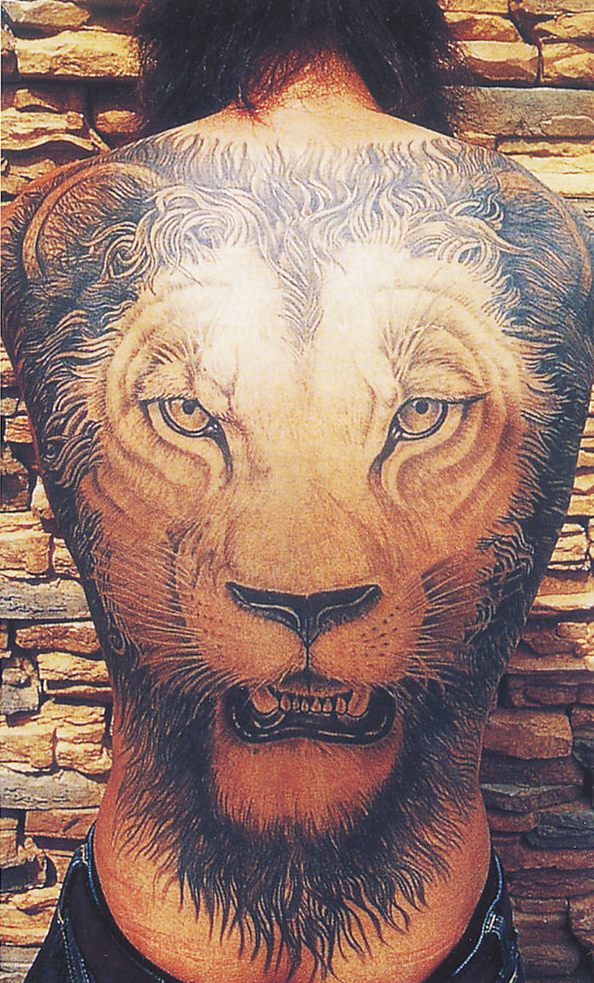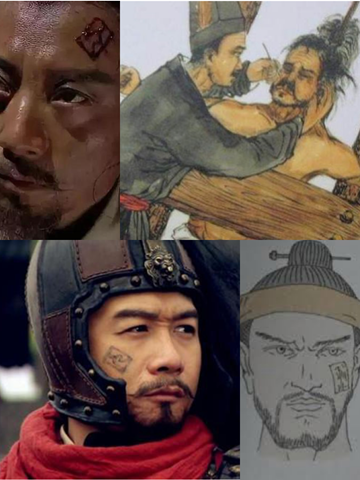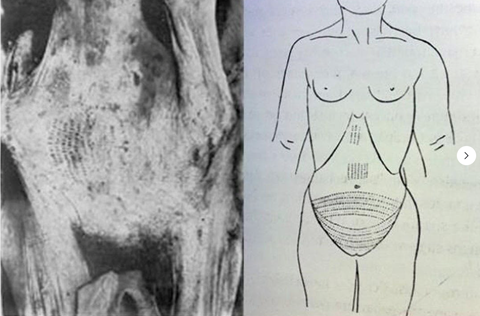
The tattoo has been accompanied human for thousands of years, the oldest human tattoo is currently traced between 3370 BC and 3100 BC, from Ötzi the Iceman, the oldest Europe’s human mummy, found in the Ötzal Alps. His body has 61 tattoos located in different areas, the majority of his tattoos were on his legs. Besides this discovery, tattoos have been proved to exist in human society for thousands of years with firm archaeological evidence of well-preserved mummies from different locations across the world.

In Asia, ancient Chinese literature refers facial tattoos to punishment for convicted criminals as it gives a strong shame to be permanently marked as a sinner, causing inevitable distances between the tattooed person and others, and brings a longtime guilty of skin damage as “the body, hair, and skin, all have been received from the parents, and so one does not dare damage them – that is the beginning of Xiao,” a core value of Chinese culture that refers to please, satisfy and respect the parents.
Facial tattoo, also named ink punishment as being one of the five cruelly physical tortures to justify a criminal in ancient China, is referred to tattooing certain words or patterns with indelible ink on the criminal’s face or forehead, which could be traced back to the Zhou Dynasty (1100 – 221 B.C.), the early period of China. Usually, the tattoos directly show the new identity or type of crimes of criminals, such as “slave”, “thief”, “robber”, or the places of a sentence such as “sentenced to…”. Such tattoo tells people the crimes of the tattooed person, by aiming to humiliate a criminal, people will define him as a sinner at the first moment, and will always remind his faults even the sentence has finished, the sinner made mistakes once in the life, though he can change his behavior after, the memory of his sin will not fade but only be strengthened as time passing, which denies their attempts to back to the usual life.

In Africa, ancient Egypt has a period for tattoo spanning at least 4,000 years with numerous boasts iconographic and physical evidence. Egyptian tattooing appears to have been a custom practiced almost exclusively on women. The specialty of it may be for decoration to be more beautiful, or for treatment to improve physical conditions, such as to be easily pregnant.

Now we know that a tattoo does not have a real impact in medical treatment, it is just a psychological effect or a wish to face the damage or potential illness, but the practice to tattoo body because of illness is still popular as it tells the past pain and expects a future strength, one of the famous cases is “Zombie boy” – Rick Genest. He took a huge surgery at a young age, which let him experience the unwillingly external operation to his skin, a craniotomy. His illness gives him a permanent skin disorder and mental pains. He uses his facial tattoos to mark his pains, consisting of at least four main visual designs: original skin like every ordinary person as canvas, brain structure presenting the incident, craniotomy providing a medical solution, and skull implying his struggle between death and life. Combining all factors, his facial tattoo is a skull without the cranium, exposing the brain, a flesh part belongs to humans, not a skeleton. Such a large range of tattoo surely brought him more pains, but he accepted and overcome them, as tattooing is a way to modify his body to recover his emotions.

In America, Samoa islands take tattoos as a custom to show the social positions of people, their tattoos represent the community, power, social status, respect, honor, etc. In Europe, most of the ancient Greco-Roman world considered tattoos as a punishment and shame. The Greeks marked criminals and slaves who tried to escape, and enemies vanquished in battles. In the Roman Empire, tattoos on slaves were also treated as proof of tax payment.
Many scholarships try to figure out the correlation behind tattoos between individuals and the public, they identify that people getting tattoos for different reasons: to honor a person who has deceased, to communicate with others about their ongoing connections, to challenge stigma, to symbolize self-awareness and self-improvement, to transmit feelings visibly from the individual to the public on a daily basis, to associate with certain group or community, and to differentiate the individual from the society.
The tattoo was not popular enough until the end of WWII when People started to use tattoos as a medium to transmit different attitudes besides consumerism. A tattoo renaissance began in the late 1950s with the influence of artists. In 1960, the electric tattoo machine was invented and significantly improved the efficiency of tattooing. Many social movements also occurred around a similar period to the tattoo renaissance and lasted for decades, such as the feminist movement, hippie movement, homosexual rights movement, environmental protection, etc. As diversity becomes widely emphasized and appreciated, the tattoos become one more way to speak out about one’s identity and to reassure one’s ego under social pressure. The history of memorial tattoos is so long that humans started to get them before discovering the deeper reasons for the behavior.
Source:
[1] Busch Akkiko. “My Decorated Self.” Print 49, no.1 (1995):112.
[2] Bell Shannon. “Tattooed: A Participant Observer’s Exploration of Meaning.” Journal of American Culture 22, no.2 (1999): 53-58.
[3] DeMello Margo. Bodies of Inscription: A Cultural History of the Modern Tattoo Community. (Durham: Duke University Press, 2000), 100-120.
[4] Gentry Glenn W., Alderman Derek H. “Trauma Written in Flesh: Tattoos as Memorials and Stories,” in Narrating the Storm: Sociological Stories of Hurricane Katrina, ed. Danielle Antoinette Hidalgo and Kristen Barber. (Newcastle upon Tyne: Cambridge Scholars Publishing, 2007), 184-197.
[5] http://www.nipic.com/show/107324.html



